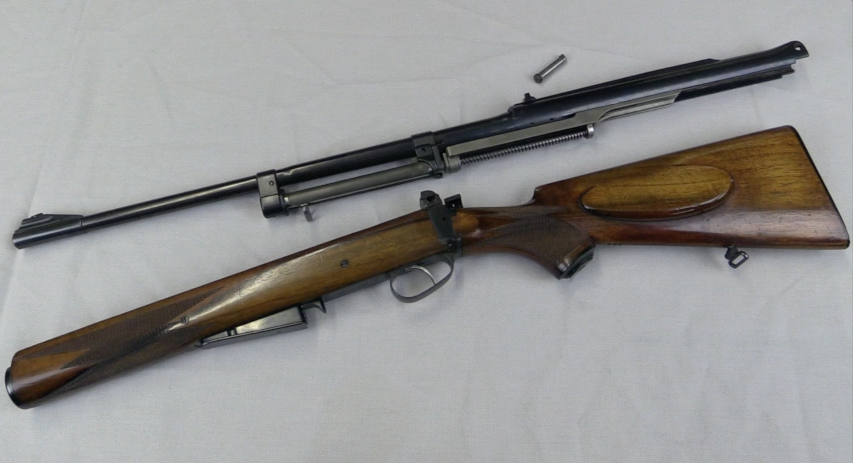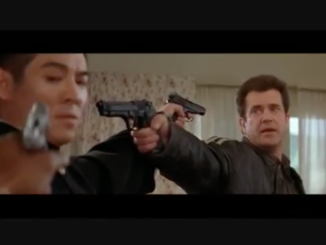Recently, we have been looking at a selection of books on Cold War eastern bloc pistols – and James D. Brown’s “Cold War Pistols of Czechoslovakia” is the best of them. While its scope is specifically on Czechoslovakian pistols, it provides a wealthy of information for the collector, histories, and shooter alike.
The book is 150 pages long, and its major chapters cover the Duo, “Z”, and vz.45, CZ 50/70, CZ 52, VZ 75/85, and CZ 82/83. Each includes detailed developmental history, production timelines complete with annual serial number tables (this is particularly interesting and important with the vz.52), disassembly and mechanical information, content on use by the Czech government or military, different patterns of holsters and magazines, and more. Mr. Brown also co-authored the excellent “Japanese Military Cartridge Handguns 1893-1945”, and this solo work of his follows the same organizational layout and editorial feel. If I were to criticize anything, it would be that the layout could use more and better photographs, and perhaps the text could be broken up a bit for easier readability (particularly in the disassembly instructions). These are minor critiques, however.
While the book only covers a relatively small number of models, those models include some of the most mechanically unique (vz.52) and technically outstanding (CZ75, CZ82/83) handguns to come out of the eastern bloc. All of the guns detailed herein are quite readily available on the US collector’s market, and make the basis for an interesting collection for those wishing to find a specialty. If Mr. Brown decides to write a third book on another firearm subject, I will purchase a copy without reservation!
Available direct from the publisher (Schiffer), or from Amazon:




I remember a gun magazine for years had many articles in classic or different older guns among the modern ones. Then they started presenting AR15, m1873 and m1911 receivers all over, like if we are in the market for arming our private army.Still in my opinion, the pleasure to read had been industrialized.Refering to international readers, the individual buyers were only in few states ! I don’t think they sell like before, at least internationaly, if it still exists.
The same happens with laws, archeology, and other new things on the site. We don’t live all, for example, in Arizona, we will never leave aside everyday’s obligations,- familly, kids, etc-,to try to change laws for our hobby,many books never make it to our countries or they are too expensive, and we are interested on guns’ mechanics.
All over the world…
Looks like well researched book; thanks for announcement.
I happen to own vz.52(military)and CZ70(police/civilian) but did not and do not intent to shoot them. The vz. 52 was refurbished by arsenal and has new black finish. However, the company retailing them in Canada kept away from purchaser their original holster which is a shame.
Shooting these guns (vz.52) is not exactly pleasant experience btw. Officers generally disliked them. In my view, their ergonomy is poor. Later model, the vz.82 was received with relief.
“Shooting these guns (vz.52) is not exactly pleasant experience btw. Officers generally disliked them. ”
When 7,62×25 cartridge was adopted in 1930 in USSR, its choice was heavily influenced by fact that it was well-suited for usage of sub-machine guns. I am not sure about Czechoslovak loading of such cartridge, but if they decided to make it to fit rather sub-machine guns, then is not wonder it might unpleasant when fired from automatic pistol.
“In my view, their ergonomy is poor”
Spring placement lead to rather long (in sense distance front-to-rear) grip, Tokarev avoids this problem with clever spring placement, see element number 28 at 4th image from top here: http://modernfirearms.net/en/handguns/handguns-en/russia-semi-automatic-pistols/tokarev-tt-eng/
“Later model, the vz.82 was received with relief.”
In fact Czechoslovak industry was tinkering with 9×18 Makarov-chambered automatic pistol at least as early as 1966 under codename Projekt PRAK
http://www.vhu.cz/exhibit/projekt-prak/
To describe this weapon shortly: it was 9×18 variant of vz. 50 automatic pistol. If I understand correctly 3500 shots were fired from prototype, some malfunctions were detected, but ways to solve them were known, so they conclude if we put into serial production we can guarantee service life to 2000 shots. However I do not understand for what reason further actions were abandoned and only [single?] prototype was crafted.
In similar time in Hungary production of FÉG PA-63 started and in Poland P64, which seems to be national equivalents of Makarov automatic pistol of Warsaw Pact members. Why Czechoslovakia did not start production of own?
Hotter load on vz.52 cartridge….. yes, this is what I read time back. How “hotter” however I do not know; some report says 15%.
Ergonomy solution on vz.52 is problematic, as you correctly stated due to hammer spring placement. TT-33 was lot better suited for more comfortable and firmer grip.
Development of shot for vz.82 service pistol was long and not problem free. As I recall reading in one Czech chat (one member in discussion had an excellent hands-on knowledge), developers were stuck with idea of using powder metallurgy for projectile core. And yes, even this shot is more powerful than Makarov’s 9mm. How much though, I am not informed.
The major progress achieved by introduction of vz.82 was threefold:
– more manageable round
– large capacity magazine
– double/single fire control with integrated safeties
Actually, this model serves till these times, in spite of limited and so far short lived use of ‘militarised’ version of CZ75. We could go into pros and cons of CZ75 for military/ police service but I will keep it out.
I’d love to own CZ83, but it is not available any more on civilian market in this country.
“How much though, I am not informed.”
According to entry in Modern Firearms http://modernfirearms.net/en/handguns/handguns-en/czech-republic-semi-automatic-pistols/cz-8283-eng/
They also produced their own 9×18 ammunition as “pistolovy naboj Vz.82”, which they claimed to be 20% more powerful than standard Soviet 9×18 PM ammunition.
Interestingly CZ 83 has barrel with polygonal rifling, at least in 9×18 (I am not sure about others).
Hmmm, yeah…. that may be the case.
In times of previous caliber (7.62x25mm) I understand higher power need for commonality with in-parallel used sub-machine guns. In this case there is hardly any justification, part of ballistic performance on its own. But guns get worn faster… which is counterproductive. Maybe Czechs just wanted to show Russians (and others) they can do better. 🙂
Denny;
In the case of the Czech military 7.62 x 25mm ammunition, the objective was to bring the ballistics of the vz.24 and vz.26 SMGs up to roughly the performance of the U.S. M1 carbine .30 USC round. The result was an 87 grain FMJ at 1800 f/s from the SMG barrel, with the same ammunition generating roughly 1500 f/s from the shorter handgun barrel.
Having fired the vz.52 with the Czech ammo, I can attest that it has a brutal recoil, and an impressive muzzle flash in broad daylight; at night, the flash is well into the “volcanic” range. I had considered the vz.52 as a cost-effective “trail gun”, but found that its ergonomics were all wrong for my hand. not to mention its hammer-dropping safety, with parts made mainly of casting that were at the time over 40 years old, made me a bit uneasy.
I ended up going back to a .357 revolver and felt much more satisfied.
cheers
eon
I hear you Eon, it makes sense.
“In this case there is hardly any justification, part of ballistic performance on its own.”
What about Scorpion SA Vz 82, see 4th image from top here: http://modernfirearms.net/en/submachine-guns/czech-republic-submachine-guns/skorpion-vz-61-eng/
?
“using powder metallurgy for projectile core”
What advantage they hope to achieve?
Anyway this reminded me about WWII German Sintereisen bullet for 9×19 Parabellum cartridge.
Probably lesser energy use in comparison with traditional swaging. Then of course would come sintering.
There was always drive to reduce energy use, one way or the other. It is also possible it was a “theme task” coming from top (ministry); it was common effort to invent what was already invented some place.
Back to vz.52 pistol locking, which I have long time reservations against (smart system mind you, just not practical for service pistol in this caliber).
Marstar Canada is offering finely made Italian pistol with same locking system. https://www.marstar.ca/dynamic/product.jsp?productid=75222
All hand fit, precision product; so is the price!
Here is video:
https://www.youtube.com/watch?v=k2ihjVk10aE
This is probably on par with some exclusive German made pistols.
“(…)“Z”(…)”
Should I understand automatic pistol described here: https://unblinkingeye.com/Guns/2CZ25s/2cz25s.html under that? Is that name correct as pointer to particular model of automatic pistol? Isn’t is just trade mark of Praga Zbrojovka, rather than model name?
I would not bother with it. Czech made pistols had two major roots – Jihoceska zbrojovka (Strakonice) and Zbrojovka Praga (Praha). Frankly, I take pity on all who attempt to say word “zbrojovka” – it must be like passage thru purgatory … not to mention “Strakonice”, yuck 🙂
Many writers show their ‘proficiency’ in knowledge of Csl. small arms industry history, but they are often off mark. It is not really important. We all know what CZ means. “What had been is gone” said one major in classic Czech-Slovak satirical movie.
Here is an excerpt:
https://www.youtube.com/watch?v=ngmK0hIXHmo
I have a VZ52 and CZ82. The former is a big chunk of steel, heavy. So, the recoil seemed pretty well managed due to the weight. It’s like a 1911 in terms of heft and size.
The latter is much more modern and useful, like a Walther PP in many ways. I use it as my concealed carry sidearm sometimes. Good mag capacity, well made, easy to operate. In fact, I own two since there were some really good deals on them here in the US several years back (my first was $219 in 2003).